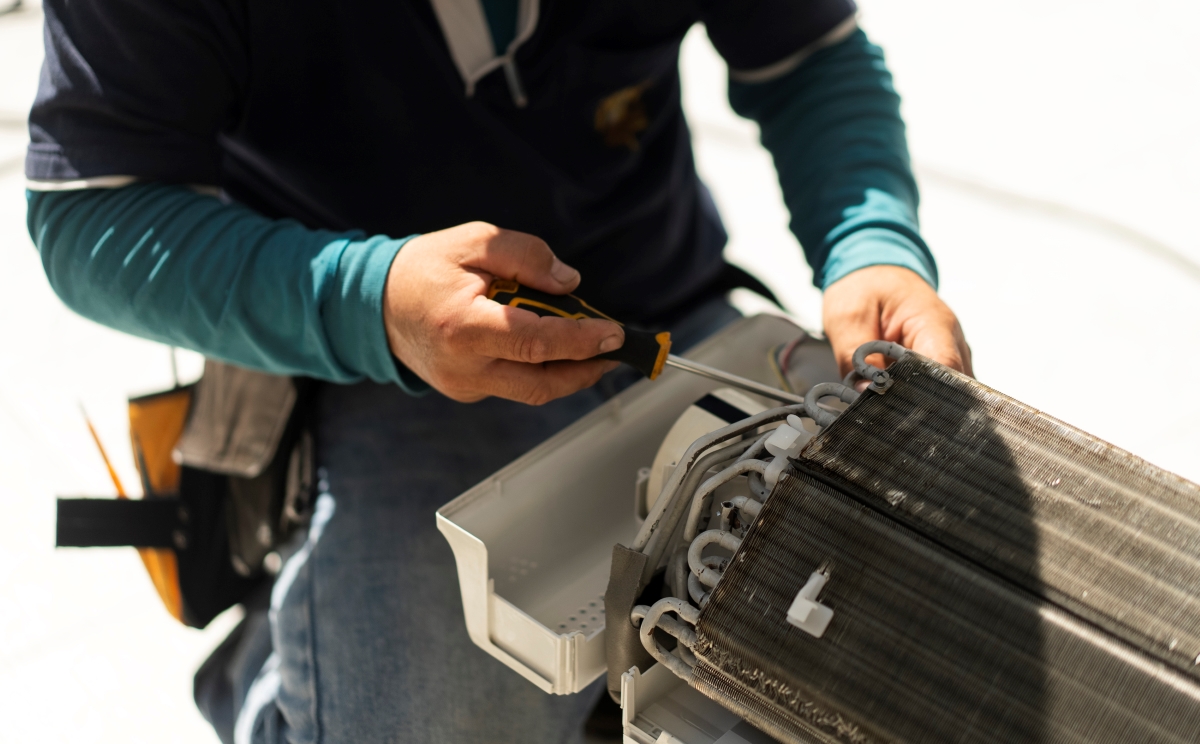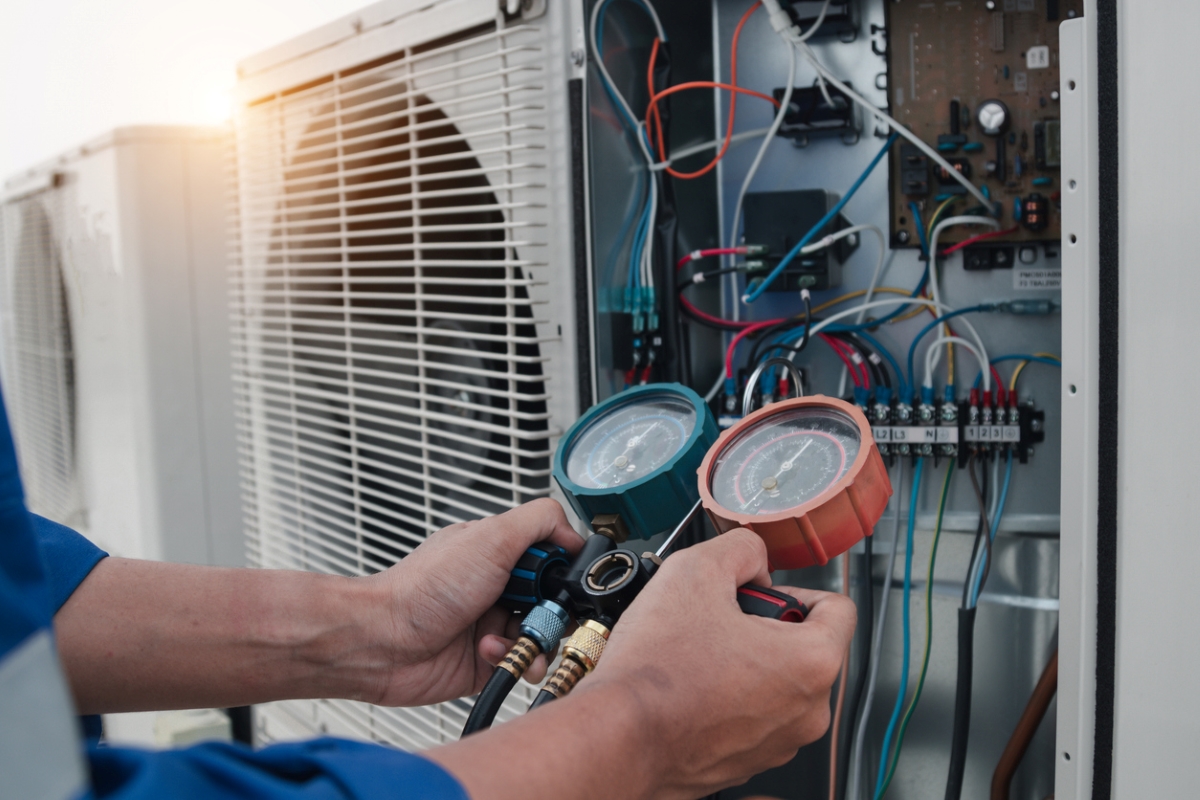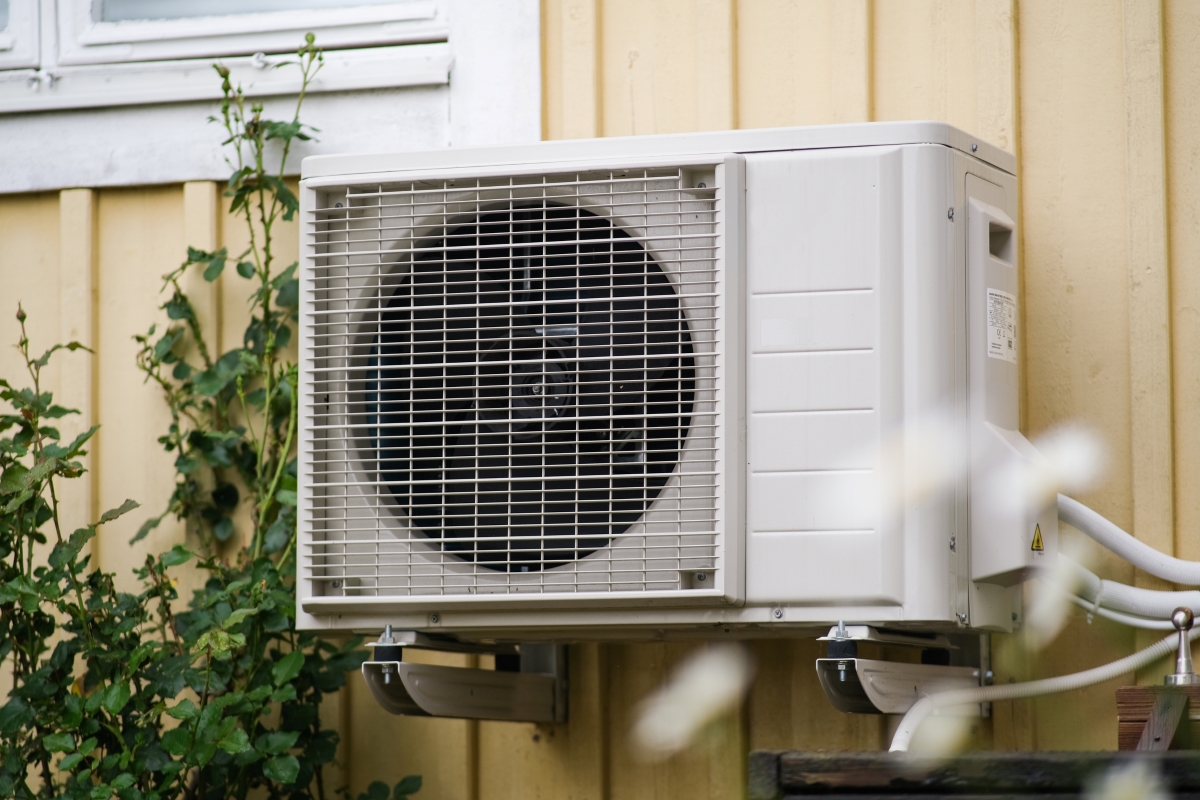We may earn revenue from the products available on this page and participate in affiliate programs. Learn More ›
Q: My heat pump quit working. It’s not blowing cold air. Is there anything I can do to fix it myself or do I need to call an HVAC technician?
A: Cooling with a heat pump is a very economical option. The U.S. Department of Energy rates these appliances as an “energy-efficient alternative to furnaces and air conditioners for all climates.” While these devices usually give up to 10 years of trouble-free performance, even the best heat pumps can go wrong occasionally. The good news is that a heat pump not working often needs a relatively straightforward DIY fix.
That said, a heat pump not cooling properly happens for a variety of reasons. But before investigating the reasons why a heat pump needs to be fixed, check the breaker box. Maybe something tripped the circuit? That could mean an electrical fault. If it keeps happening, we’d generally recommend talking to a professional.
If it’s not a tripped circuit, it’s important to take a close look at each of the potential causes in order to know the best fix. To supplement our own experience and research, we contacted a number of HVAC specialists for their input.
1. The filters are clogged.

How a heat pump works is by exchanging air. Many heat pumps can be both a heating and cooling system. In the summer, they blow cold air into the room. In winter, they can switch to blowing warm air inside. Either way, there’s a lot of air moving around!
That air is full of dust, hair, bugs, bits of leaf, or other yard debris. All of these things can damage the insides of a heat pump, so filters are used to trap them. If those filters are clogged, it will reduce efficiency of the heat pump. Justin Cornforth, CEO of Ace Plumbing in South Carolina, told us: “The consequences of dirty filters might seem exaggerated, but they can be the cause of many problems with a heat pump. Clogged filters restrict airflow, and less heat is absorbed from the room. This is why your heat pump is not cooling properly.”
Braden Cook, senior director at HVAC manufacturer Carrier agrees: “Blockages in the indoor blower can result in air becoming obstructed and weak or no airflow into your home.” Fortunately, if this is the reason for a heat pump not working, Cook told us the fix is easy and inexpensive. “Inspect and clean your air filters, or replace them if necessary.” Your owner’s manual should have relevant information on how to manage the filters on your model.
2. The thermostat is not set correctly or is malfunctioning.
Another common reason that a heat pump stopped working is either that the thermostat has been set to the wrong temperature or that it has developed a fault. I have personal experience with this issue. During the summer, there’s a tendency to turn down the thermostat as the weather gets hotter because you want more cold air. Then, maybe in the winter, it was switched over to warm air and was never switched back. In my case, I didn’t notice I had the thermostat set higher than the actual temperature of the air in the room. So my heat pump stopped working because it thought it had already done its job. As soon as I reset the temperature, it started again.
If you want cooling air, the thermostat should be set 1 or 2 degrees lower than the actual room air. That way the heat pump works to bring the temperature down. The first step then is to check that setting. Try dropping the thermostat a couple of degrees and see if the heat pump starts. If it doesn’t start, then the device itself could be faulty or the cause could be another on this list. If you have a smart thermostat, it may give you error codes. Whether it does or not, it’s likely you’ll need to call your HVAC engineer.
3. The heat pump coils are dirty.

Heat pump coils are a key part of the heat transfer system. Generally speaking, there are condenser coils on the outdoor unit that work when the pump is supplying heat, and evaporator coils on the unit (or units) inside that absorb warm air and exchange it for cold.
Cook from Carrier says: “Things like cottonwood [seeds] and other dirt and debris can build up on your outdoor coil and reduce its ability to transfer heat effectively.” Usual signs are either a drop in performance so there’s lower air flow indoors or ice forming on the coils outdoors.
Experts recommend the coils are cleaned once every 6 months. We have comprehensive advice on a low-cost DIY solution in our article on air conditioners not cooling, but it’s a job that some homeowners find intimidating. A maintenance contract with your local HVAC specialist is worth considering.
4. The compressor or reversing valve is faulty.
The compressor sits in the unit outside along with the condenser coil. Its job is to distribute the cooling refrigerant to the indoor unit (often called the air handler). If the compressor fails, there’s no coolant flow. A drop in the amount of cold air flow is one indicator that the compressor is bad. It might cause a breaker to trip, or there might be excessive noise from the outdoor unit. (Although, sometimes this noise can be the heat pump fan not working properly because the bearings wear over time). Unfortunately, compressors can fail without much warning.
Alongside the compressor is the reversing valve. It controls which way the refrigerant moves so it’s responsible for switching from supplying hot air to cool air. The heat pump will either be stuck on hot or stuck on cold if it’s not working properly.
While it’s possible to diagnose a fault in the outdoor unit, a DIY repair is not practical. It’s time to call in a professional.
5. The refrigerant levels are low.
When using a heat pump for cooling, it works a lot like a refrigerator. Just like those appliances, a heat pump needs a refrigerant to be circulating through the system. According to Allen Chenault, owner of Florida-based AC’s Heating & Air LLC: “The most common issue we find when a heat pump isn’t cooling is low refrigerant levels, often due to leaks. This compromises the heat pump’s efficiency in transferring heat, resulting in inadequate cooling.”
So if it’s such a regular problem (and other professionals we contacted confirm this) you might be wondering why we’ve put it so far down the list? The reason is that sadly there’s nothing you can do except call a HVAC expert. Diagnosing leaks and recharging the system is a specialist task. Although some retailers sell kits, local regulations often mean it’s actually illegal to attempt the job yourself.
6. The unit was incorrectly specified.

Strictly speaking this isn’t a case of the heat pump not cooling, but it probably feels like it. Sometimes the heat pump just isn’t powerful enough for the area it is intended to cool. It might happen if you moved into a home where a previous owner had tried to cut costs. It’s also possible that whoever specified the unit miscalculated.
The key issue is the BTU (British Thermal Unit) output. The higher the figure, the larger the area that can be heated or cooled. As an example, a 10,000-BTU heat pump is good for areas of around 450 to 500 square feet. If that unit was installed in an area of 600 or 700 square feet, it would feel like it was underperforming, even if it was running at peak efficiency.
Unfortunately, the only way to cool the space properly is to invest in a properly sized replacement. Our article on heat pump costs offers useful information.
Final Thoughts
It’s frustrating to find a heat pump not cooling properly, and it typically happens when it’s needed most. However, as we hope we’ve demonstrated in the article above, a fix will often be something that even inexperienced DIYers can tackle. It could be something as simple as dirty filters that can be cleaned quickly or replaced at modest expense.
As always, prevention is better than cure. Reading the owner’s manual and carrying out regular maintenance should help you maximize both energy efficiency and comfort levels. Of course, if you’re in any doubt, it’s always a good idea to call your local HVAC professional for help or advice. They have the skills and equipment to diagnose faults quickly, and they can get your heat pump running like it should again.


